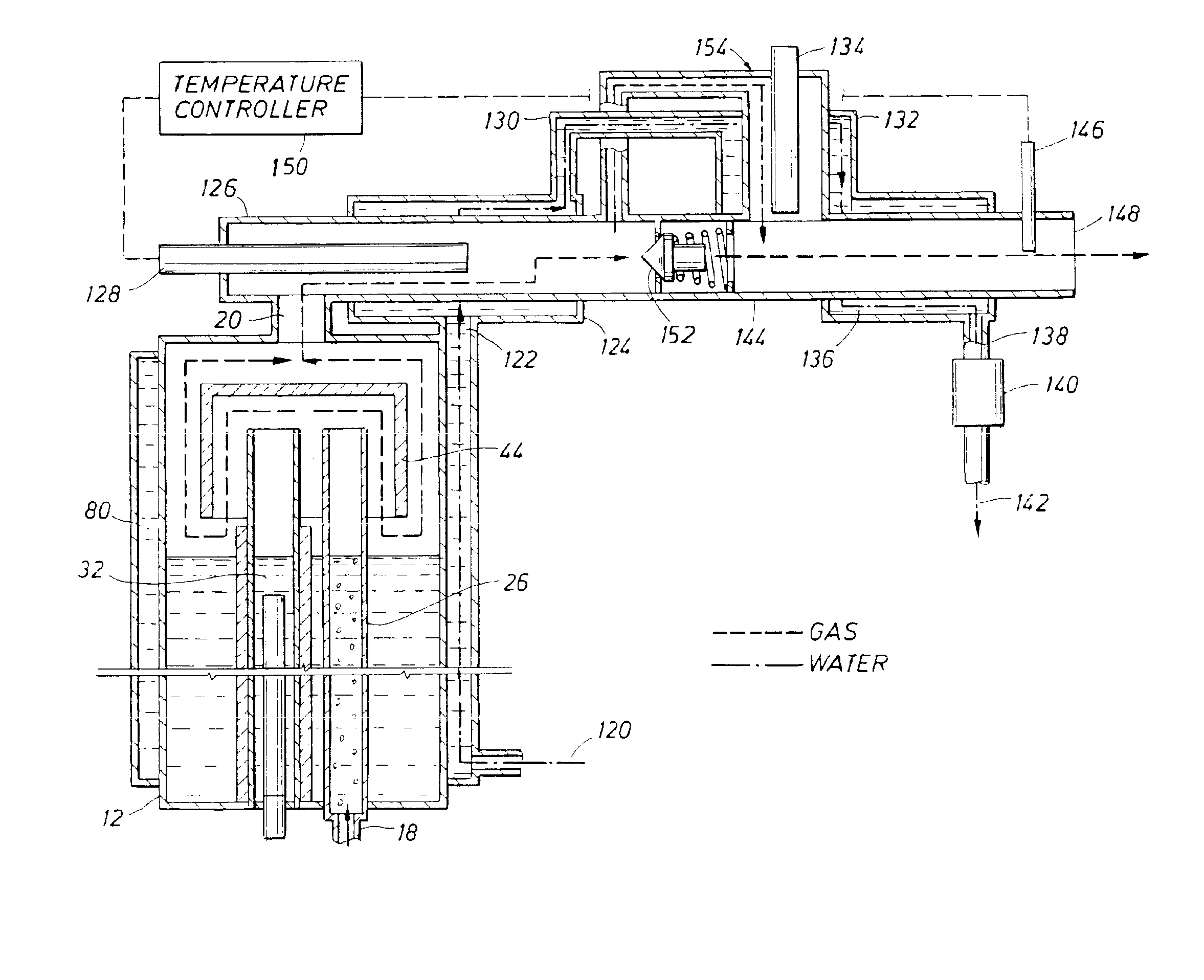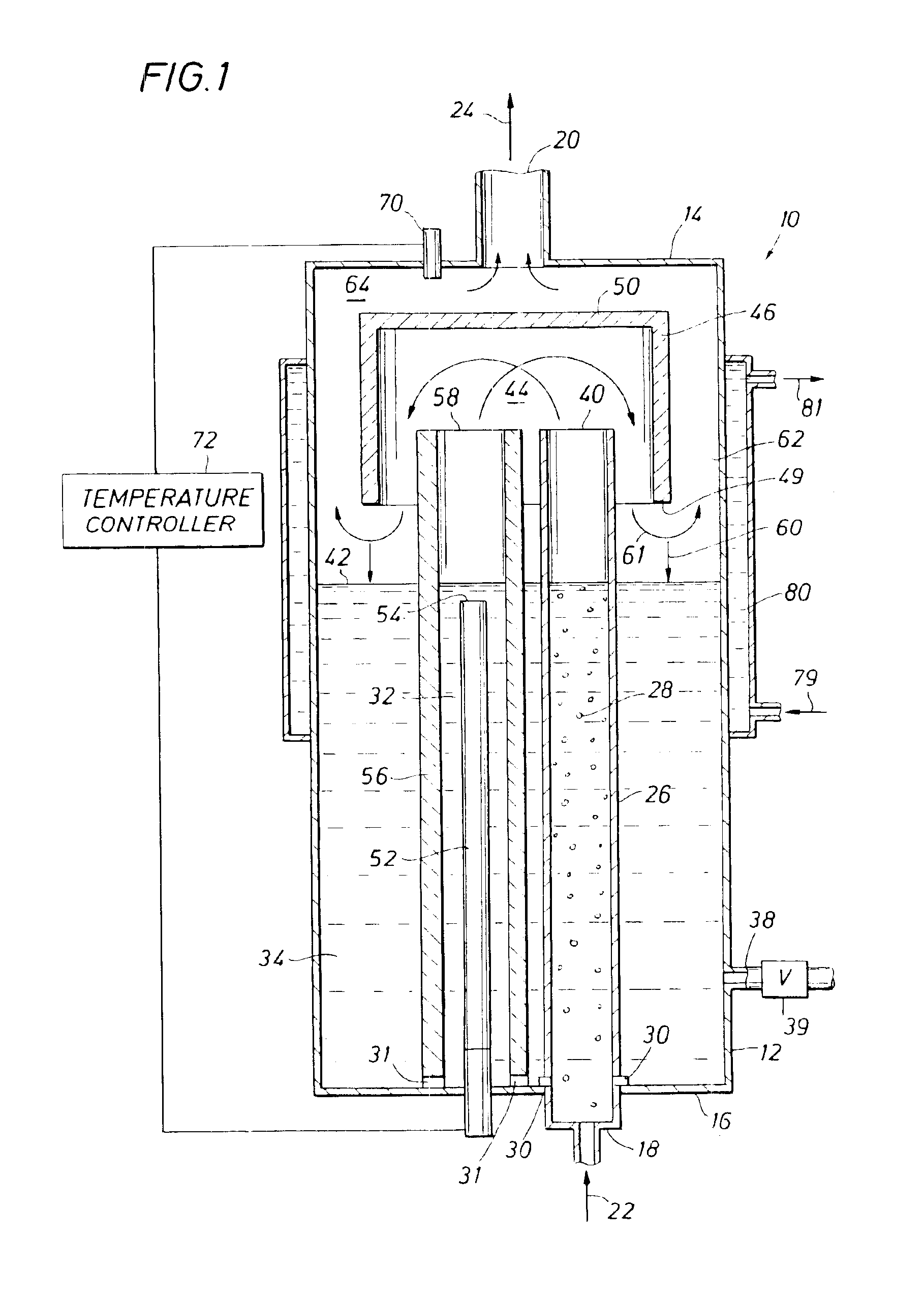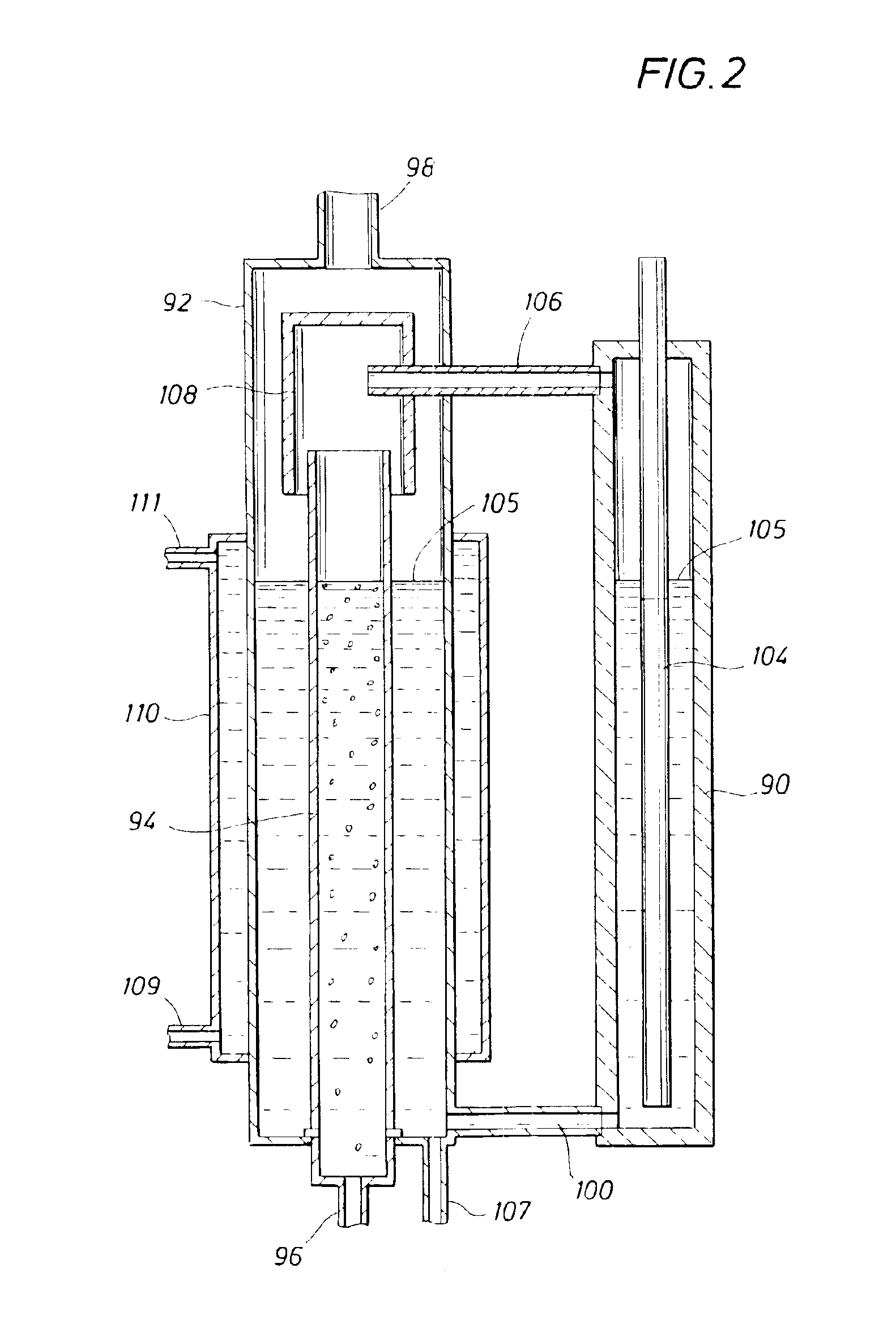Dew point humidifier (DPH) and related gas temperature control
a humidifier and dew point technology, applied in flow mixers, combustion air/fuel air treatment, secondary air addition to fuel, etc., can solve the problems of difficult humidity control, uncertainty as to just how much humidity has been imparted, and typical bubbling-type humidifiers cannot deliver 100% relative humidity, etc., to achieve simple and easy control, simple, economic and effective
- Summary
- Abstract
- Description
- Claims
- Application Information
AI Technical Summary
Benefits of technology
Problems solved by technology
Method used
Image
Examples
Embodiment Construction
FIG. 1 show the core structure of a humidifier 10 and a method humidifying gas, in accordance with the present invention. The humidifier 10 principally comprises a vessel 12, preferably cylindrical in aspect, with a top 14 and a bottom 16. An inlet line 18 introduces dry gas into the vessel 12, and an outlet 20 directs humidified gas from the vessel. Dry gas is shown entering the vessel by an arrow 22 and humidified gas is shown exiting the vessel by an arrow 24.
The dry gas 22, which is at a lower temperature than set dew point temperature, is initially humidified by flowing through pre-humidifier 26. The dry gas 22 bubbles up through the pre-humidifier 26 forming bubbles 28, which rise up through the pre-humidifier, thereby picking up some moisture and being warmed to a higher temperature by the water in the pre-humidifier column. The pre-humidifier 26 defines an elongated container, such as a tube, with openings 30, preferably along the bottom of the tube inside the vessel. The op...
PUM
| Property | Measurement | Unit |
|---|---|---|
| Temperature | aaaaa | aaaaa |
| Flow rate | aaaaa | aaaaa |
| Gravity | aaaaa | aaaaa |
Abstract
Description
Claims
Application Information
 Login to View More
Login to View More - R&D
- Intellectual Property
- Life Sciences
- Materials
- Tech Scout
- Unparalleled Data Quality
- Higher Quality Content
- 60% Fewer Hallucinations
Browse by: Latest US Patents, China's latest patents, Technical Efficacy Thesaurus, Application Domain, Technology Topic, Popular Technical Reports.
© 2025 PatSnap. All rights reserved.Legal|Privacy policy|Modern Slavery Act Transparency Statement|Sitemap|About US| Contact US: help@patsnap.com



